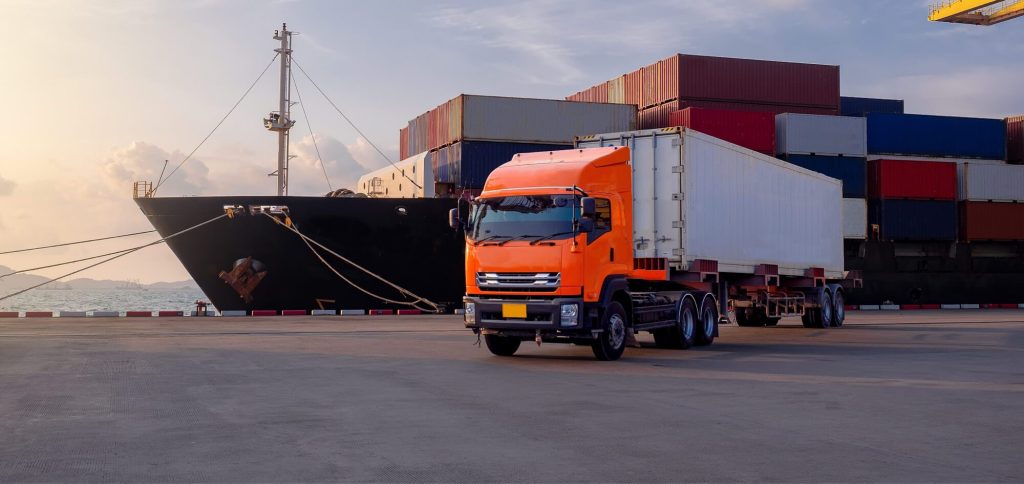Critical constraints with supply chain, shipping, port congestion, and logistics are serious issues.
No one likes wasting time standing in queues. Ships included.
Understandable.
For the maritime industry and for businesses, the interminable wait time in queues can be a sheer loss of money, resources, and operational efficiency.
Port congestion is expensive. Period.
Port congestion issues lead to chronic gridlocks at ports, with ships — and therefore containers — stranded at ports or offshore for days/weeks/months — waiting to unload. Port congestion leads to a ripple effect — from stranded ships to waiting trucks. Leading to disrupted supply chains, increased prices, delays in delivery, and more.
Wondering how exactly port congestion causes major issues?
Consider Nike: the popular retailer spends almost $200 million annually to carry an extra 7 to 14 days of inventory because of the unreliable transportation caused by port congestion.
Well-known causes of port congestion are cargo surges, infrastructure bottlenecks, marine terminal inefficiency, decreased maritime operational productivity, and equipment shortages.
For additional impact, add black swan events, sudden geo-political shifts, and anything else that can threaten the fabric of supply chains, ocean transportation, and shipping logistics.
Marcus Hand at Sea Trade Maritime outlines that port congestion — or the long wait at the ports — has taken out at least 11% of global containership capacity in the year 2021 while volumes grew at 7%. Container line reliability is only at 30-40% between 2021 and 2022.
He reiterates that during normal times, around 2% of containership capacity is tied up in waiting at ports.
Furthermore, congestion and bottlenecks are worsening as we head into the year 2022. We’d do well to figure a way out of that.
How to solve port congestion issues?
How exactly should businesses inch towards resolving bottlenecks?
Admittedly, several aspects involving several players are involved. Some of these, however (thankfully), are within your control.
Get a Bird’s Eye view of Data That Matters
The NCBFAA (National Custom Brokers & Forwarders Association of America, Inc) suggests that one of the ways businesses can manage port congestion and supply chain disruption is to get a handle on port metrics or port performance data.
That, in addition to rigorous analysis of the actual picture of how things look from far ashore to trucking logistics; from port infrastructure and operations to container capacities; overall ocean visibility and container tracking, and more.
We agree.
Make Smart Decisions
We recently wrote about how the current sanctions have changed the shipping traffic patterns in the Black Sea (reaching as far as Baltic Sea as well).
We pointed out that there’s a need for temporary storage areas to hold containers (instead of leaving them stranded) due to lack of space or time or delays from processing this cargo.
We suggested using smaller ports or alternative ports.
Our new Ocean Visibility service designed specifically to solve port congestion issues can help provide location, anchorage and berth waiting time, number of waiting vessels, and predictive insights in one unified data format to help you reallocate resources or make decisions quickly to avoid delays due to port congestion.
Smart decision-making, however, depends on the data you use. That leads us to…
Use trustworthy data sets
Your decision-making depends on data.
Access to data helps cargo owners, freight forwarders, shipping agents and 3PLs stay synced and enables collaboration.
At Gatehouse, our real-time port intelligence predictions (with more than 300+ billion data points) are based on accurate data from all commercial ports — giving you a clear idea about the vessels stuck offshore; ships waiting in queues (along with possible lead times, port data, and more); and also historic data to help you make analytical decisions quickly.
Take advantage of our real-time data sets to integrate easily into your current platforms while the data updates every 8 hours.
Get an overview of your selected container ports and alternative ports, their number of vessels at anchorage, their average anchorage and berth waiting times, predictive insights, and historic data for the last 30 days.
Data-driven maritime management is the future.
How are port congestion issues affecting your business? Let us know.

Martin Dommerby
Former CEO of GateHouse Maritime




